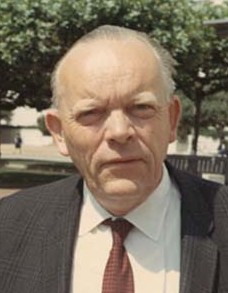-
(b.) -1905 February 23(d.)1991 May 22
Bio/Description
An American mathematician who refined Edouard Lucas' work in the 1930s and devised the Lucas?Lehmer test for Mersenne primes. His peripatetic career as a number theorist fortuitously brought him into the center of research into early electronic computing. He was born in Berkeley, California, and studied physics and earned a Bachelor degree from UC Berkeley, and continued with graduate studies at the University of Chicago. He received a Master's degree and a Ph.D., both from Brown University, in 1929 and 1930, respectively. He became a National Research Fellow, allowing him to take positions at the California Institute of Technology from 1930 to 1931 and at Stanford University from 1931 to 1932. After being awarded a second National Research Fellowship, he and his family moved on to Princeton, New Jersey between 1932 and 1934, where he spent a short time at the Institute for Advanced Study. He worked at Lehigh University in Pennsylvania from 1934 until 1938. He spent 1938-1939 in England on a Guggenheim Fellowship visiting both the University of Cambridge and the University of Manchester, meeting G. H. Hardy, John Edensor Littlewood, Harold Davenport, Kurt Mahler, Louis Mordell, and Paul Erdős. He returned to America by ship along with his family just before the beginning of the Battle of the Atlantic and he continued at Lehigh University for the 1939-1940 academic year. In 1940, he accepted a position back at the mathematics department of UC Berkeley, and at some point in his career there, he developed the Linear congruential generator (pseudorandom number generator), which is frequently referred to as a Lehmer random number generator. He and his wife also assisted Harry Vandiver with his work on Fermat's Last Theorem, computing many Bernoulli numbers required. From 1945-1946, he served on the Computations Committee along with Haskell Curry, Leland Cunningham, and Franz Alt at Aberdeen Proving Grounds in Maryland, a group established as part of the Ballistics Research Laboratory to prepare the ENIAC for utilization following its completion at the University of Pennsylvania's Moore School of Electrical Engineering. It was during this short tenure that the he and his wife ran some of the first test programs on the ENIAC?according to their academic interests, these tests involved number theory, especially sieve methods, but also pseudorandom number generation. They spent weekends staying up all night running such problems, the first over the Thanksgiving weekend of 1945. (Such tests were run without cost, since the ENIAC would have been left powered on anyway in the interest of minimizing vacuum tube failures.) The problem run during the 3-day Independence Day weekend of 1946, with John Mauchly serving as computer operator, ran around the clock without interruption or failure. The following Tuesday, he delivered the talk "Computing Machines for Pure Mathematics" as part of the Moore School Lectures, in which he introduced computing as an experimental science, and demonstrated the wit and humor typical of his teaching lectures. He was chairman of the Department of Mathematics at University of California, Berkeley from 1954 until 1957 and continued working at UC Berkeley until 1972, the year he became professor emeritus. He would remain active in computing developments for the remainder of his career. Upon his return to Berkeley, he made plans for building the California Digital Computer (CALDIC) with Paul Morton and Leland Cunningham. In addition to his significant contributions to number theory algorithms for multiprecision integers, such as factoring, Euclid's algorithm, long division, and proof of primality, he also formulated Lehmer's conjecture and participated in the Cunningham project, one of the oldest continuously ongoing activities in computational number theory.
-
Date of Birth:
1905 February 23 -
Date of Death:
1991 May 22 -
Gender:
Male -
Noted For:
He was part of the Computations Committee formed to prepare the ENIAC for utilization following its completion and was active in the building of the California Digital Computer (CALDIC) -
Category of Achievement:
-
More Info:


